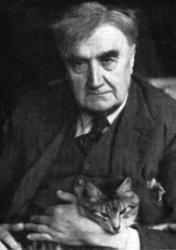Planning worship?
Check out our sister site, ZeteoSearch.org,
for 20+ additional resources related to your search.
- |
User Links
Search Results
The World One Neighborhood
Author: Jeannette E. Perkins Appears in 6 hymnals First Line: We thank thee, Lord, for eyes to see Used With Tune: MELODY
The World One Neighborhood
FOREST GREEN
Meter: 8.6.8.6 D Appears in 271 hymnals Composer and/or Arranger: R. Vaughan Williams Tune Sources: English Traditional Melody Tune Key: F Major Incipit: 51112 32345 34312 Used With Text: We thank thee, Lord
FOREST GREEN
We thank thee, Lord
Author: Jeannette E. Perkins Hymnal: The Beacon Song and Service book #139 (1935) Meter: 8.6.8.6 D First Line: We thank thee, Lord, for eyes to see Topics: Brotherhood and Service Languages: English Tune Title: FOREST GREEN
We thank thee, Lord
The World One Neighborhood
Author: Jeannette E. Perkins Hymnal: A Hymnal for Friends #27 (1955) First Line: We thank thee, Lord, for eyes to see Tune Title: MELODY
The World One Neighborhood
World one neighborhood
Author: Jeannette E. Perkins Hymnal: Supplement to Hymns and Songs #d35 (1940) First Line: We thank thee, Lord, for eyes to see
World one neighborhood
Ralph Vaughan Williams

1872 - 1958 Person Name: R. Vaughan Williams Arranger of "FOREST GREEN" in The Beacon Song and Service book Through his composing, conducting, collecting, editing, and teaching, Ralph Vaughan Williams (b. Down Ampney, Gloucestershire, England, October 12, 1872; d. Westminster, London, England, August 26, 1958) became the chief figure in the realm of English music and church music in the first half of the twentieth century. His education included instruction at the Royal College of Music in London and Trinity College, Cambridge, as well as additional studies in Berlin and Paris. During World War I he served in the army medical corps in France. Vaughan Williams taught music at the Royal College of Music (1920-1940), conducted the Bach Choir in London (1920-1927), and directed the Leith Hill Music Festival in Dorking (1905-1953). A major influence in his life was the English folk song. A knowledgeable collector of folk songs, he was also a member of the Folksong Society and a supporter of the English Folk Dance Society. Vaughan Williams wrote various articles and books, including National Music (1935), and composed numerous arrangements of folk songs; many of his compositions show the impact of folk rhythms and melodic modes. His original compositions cover nearly all musical genres, from orchestral symphonies and concertos to choral works, from songs to operas, and from chamber music to music for films. Vaughan Williams's church music includes anthems; choral-orchestral works, such as Magnificat (1932), Dona Nobis Pacem (1936), and Hodie (1953); and hymn tune settings for organ. But most important to the history of hymnody, he was music editor of the most influential British hymnal at the beginning of the twentieth century, The English Hymnal (1906), and coeditor (with Martin Shaw) of Songs of Praise (1925, 1931) and the Oxford Book of Carols (1928).
Bert Polman
Ralph Vaughan Williams
Michael Praetorius

1571 - 1621 Person Name: Praetorius Composer (melody) of "MELODY" in A Hymnal for Friends Born into a staunchly Lutheran family, Michael Praetorius (b. Creuzburg, Germany, February 15, 1571; d. Wolfenbüttel, Germany, February 15, 1621) was educated at the University of Frankfort-an-der-Oder. In 1595 he began a long association with Duke Heinrich Julius of Brunswick, when he was appointed court organist and later music director and secretary. The duke resided in Wolfenbüttel, and Praetorius spent much of his time at the court there, eventually establishing his own residence in Wolfenbüttel as well. When the duke died, Praetorius officially retained his position, but he spent long periods of time engaged in various musical appointments in Dresden, Magdeburg, and Halle. Praetorius produced a prodigious amount of music and music theory. His church music consists of over one thousand titles, including the sixteen-volume Musae Sionae (1605-1612), which contains Lutheran hymns in settings ranging from two voices to multiple choirs. His Syntagma Musicum (1614-1619) is a veritable encyclopedia of music and includes valuable information about the musical instruments of his time.
Bert Polman
Michael Praetorius


 My Starred Hymns
My Starred Hymns

